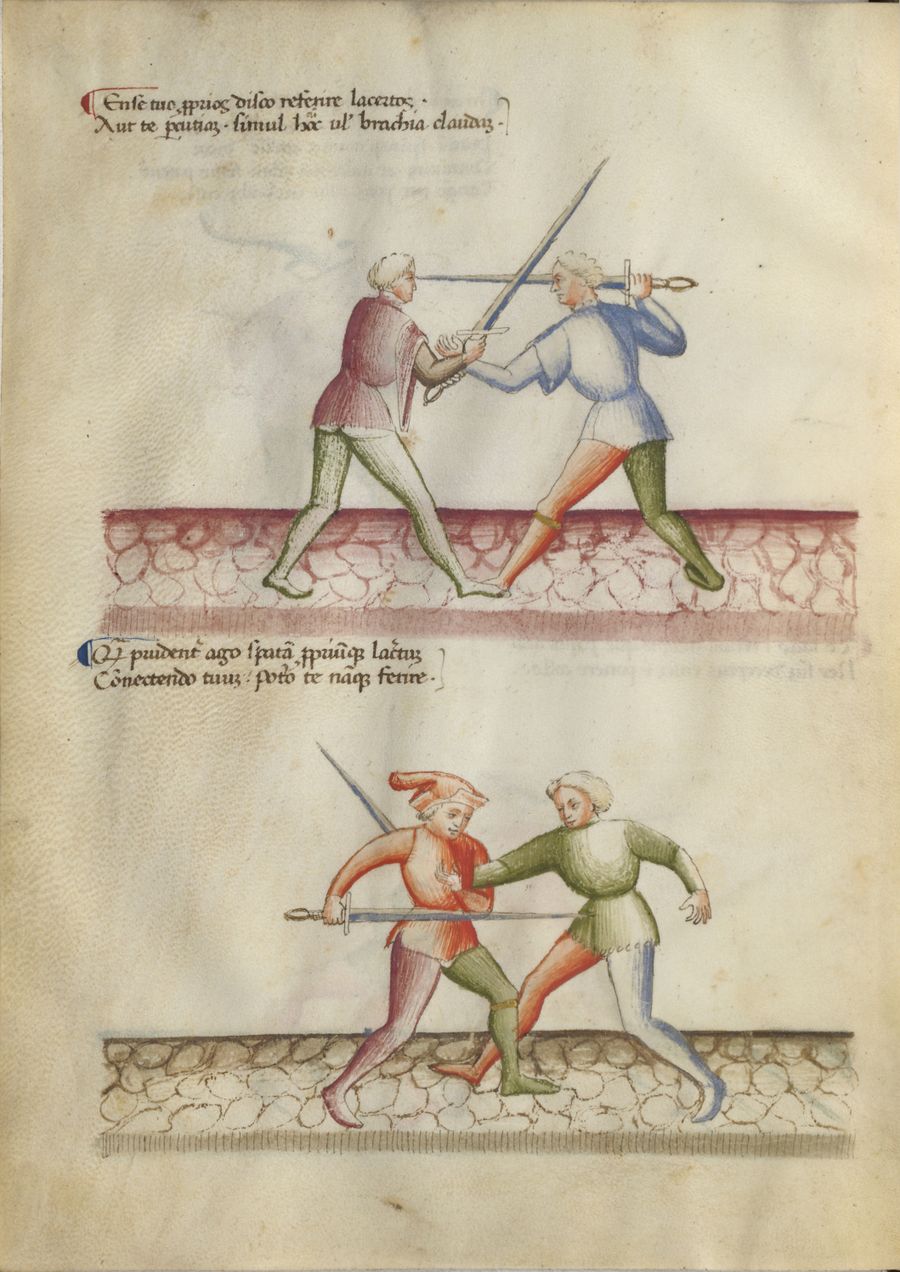|
|
You are not currently logged in. Are you accessing the unsecure (http) portal? Click here to switch to the secure portal. |
Difference between revisions of "User:Kendra Brown/Florius/English MS Latin 11269 27v"
Kendra Brown (talk | contribs) |
|||
| Line 5: | Line 5: | ||
== Italian == | == Italian == | ||
Not in PD, only Paris and Getty. | Not in PD, only Paris and Getty. | ||
| − | {| | + | {| |
| − | |- | + | |- style="vertical-align: top;" |
| − | | This play is taken from the first play of the First Dagger Remedy Master, who places his left hand over the opponent’s wrist[301] to take the dagger from his hand. In similar fashion the student here places his left hand over the opponent’s right forearm, rotating it outwards to remove the sword from his right | + | | style="width: 30em;" | |
| − | + | This play is taken from the first play of the First Dagger Remedy Master, who places his left hand over the opponent’s wrist[301] to take the dagger from his hand. In similar fashion the student here places his left hand over the opponent’s right forearm, rotating it outwards to remove the sword from his right hand. Or from here he can transition to a middle bind, as shown in the second play of the above-mentioned First Dagger Remedy Master. And that bind belongs to this student. | |
| − | + | | style="width: 30em;" | {{section|Page:MS Ludwig XV 13 29v.jpg|29v-b}} | |
| − | | | ||
| − | | | ||
| − | |- | ||
|} | |} | ||
| − | |||
| − | |||
| − | |||
| − | |||
| − | |||
| − | |||
| − | |||
| − | |||
| − | |||
| − | |||
| − | |||
| − | |||
| − | |||
| − | |||
| − | |||
| − | |||
| − | |||
==English 27v== | ==English 27v== | ||
Revision as of 20:22, 2 January 2024
Latin 27v
¶ Ense tuo proprios disco referire lacertos.
Aut te percutiam. simul hoc[1] vel brachia claudam.[2]
¶ Quam prudenter ago spatam propriumque lacertum
Connectendo tuum. potero te namque ferire.
Italian
Not in PD, only Paris and Getty.
|
This play is taken from the first play of the First Dagger Remedy Master, who places his left hand over the opponent’s wrist[301] to take the dagger from his hand. In similar fashion the student here places his left hand over the opponent’s right forearm, rotating it outwards to remove the sword from his right hand. Or from here he can transition to a middle bind, as shown in the second play of the above-mentioned First Dagger Remedy Master. And that bind belongs to this student. |
[29v-b] ¶ Questo zogho e tolto del zogho dela daga çoe del primo magistro rimedio, che come ello mette la mane stancha sotto la daga per torgella de mane, per lo simile questo scolaro gli mette la mano stancha sotto la mane dritta del zugadore per trargli la spada di mano. Overo ch'ello mettera in ligadura mezana come lo secondo zogho ch'e dredo lo primo magistro rimedio di daga ch'e ditto denanzi. E quella ligadura si'e di questo scolaro. |
English 27v
¶ I learn to strike your upper arm back[wards] with your sword.
Either I would beat you, and simultaneously with [the strike back], I would also blockade your lower arm.
¶
- ↑ Added later: "cum". Potentially could be read as "eum" but we believe "cum" is a useful clarification of this sentence.
- ↑ While lacertos and brachia refer specifically to the upper and lower arms respectively, this is probably an attempt by the translator to avoid repetition, rather than specific parts of the arm that are affected by the actions. We have retained the specificity for linguistic reasons. We used arm instead of shoulder in the following couplet because the technique does not work with the shoulder.

